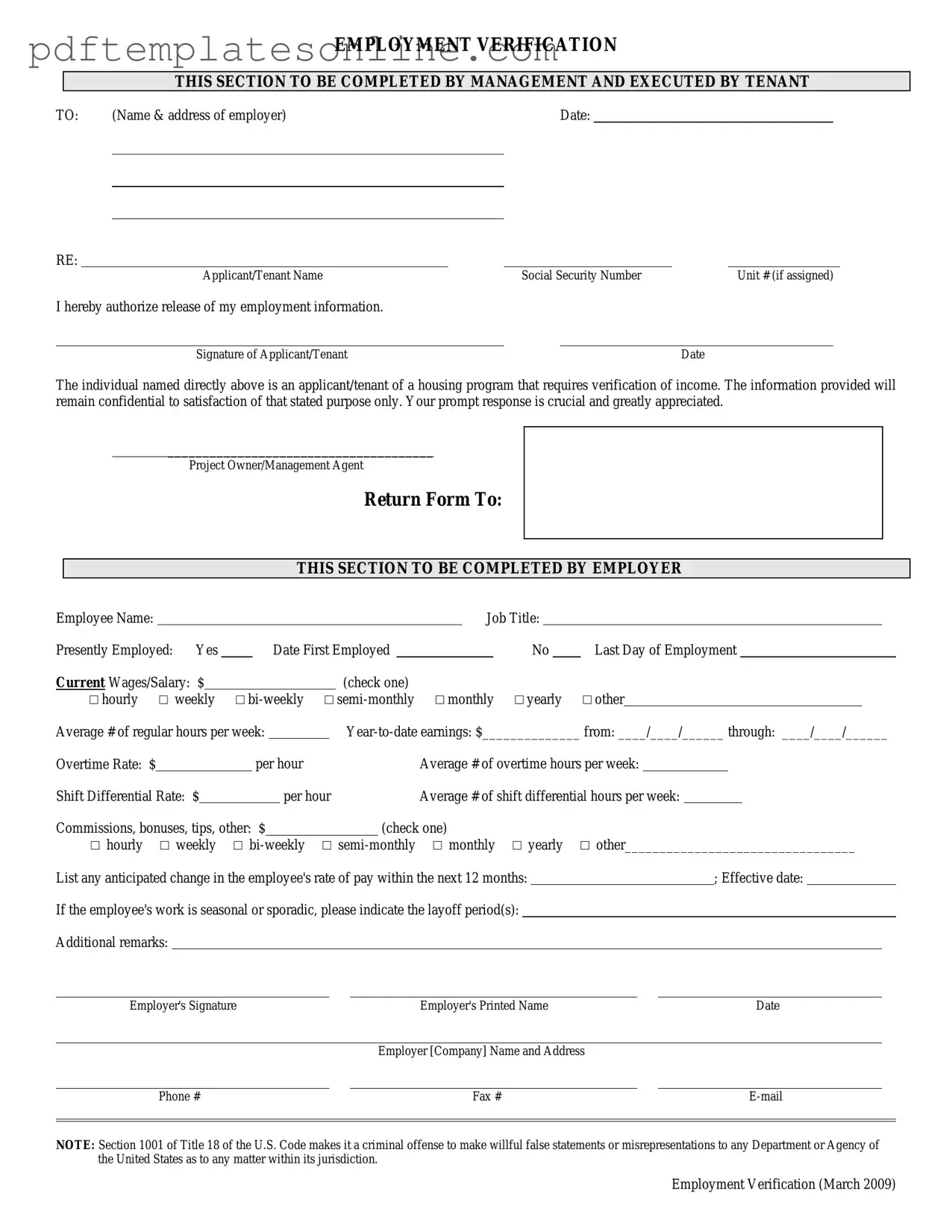Filling out an Employment Verification Form can be straightforward, but many people make common mistakes that can delay the process. One frequent error is providing incorrect personal information. This includes misspellings of names or incorrect addresses. Such mistakes can lead to confusion and may result in a rejection of the verification request.
Another mistake is omitting essential details. Some individuals forget to include their job title or the dates of employment. This information is crucial for the verification process. Without it, the form may not serve its purpose effectively.
People often fail to sign the form. A signature is necessary to validate the information provided. Without it, the form is incomplete and cannot be processed. Additionally, not dating the form can cause issues, as it may not be clear when the information was provided.
Providing outdated information is another common error. Some individuals fill out the form based on previous employment without updating their current status. This can lead to discrepancies, especially if the employer needs information about the most recent job.
Inconsistent information is also problematic. If someone lists different job titles or employment dates on various forms, it raises red flags. Employers may question the accuracy of the information, which can hinder the verification process.
Some people neglect to check the form for errors before submission. Simple typos can create misunderstandings. Taking a moment to review the form can prevent unnecessary complications.
Another mistake is not following the instructions provided with the form. Each employer may have specific requirements. Ignoring these can result in an incomplete submission.
People sometimes provide excessive information. While it’s important to be thorough, including irrelevant details can clutter the form. Stick to the necessary information to keep it clear and concise.
Failing to include contact information for the employer can also be an issue. If the verification requires further clarification, the reviewer needs a way to reach out. Without this information, the process can stall.
Lastly, some individuals do not keep a copy of the completed form. Having a record is important for personal reference. It allows individuals to track what information was submitted, which can be helpful if there are follow-up questions.
